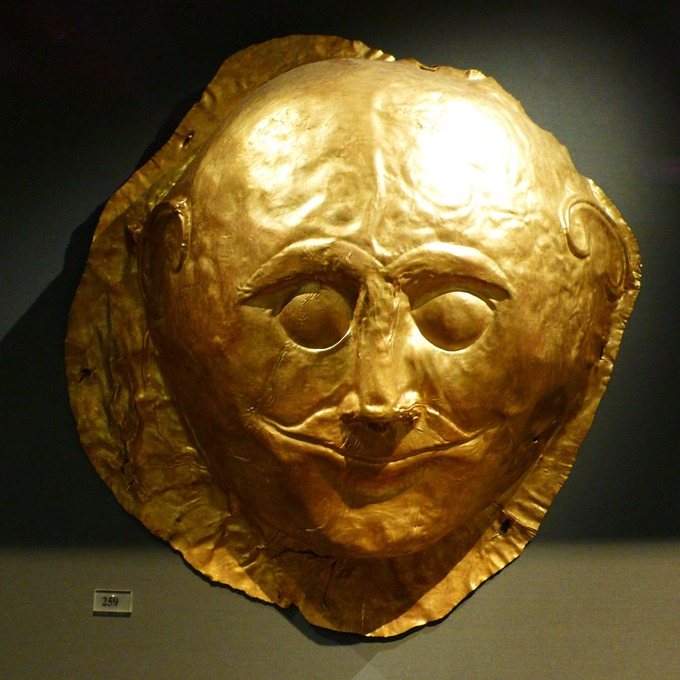Dr. Steven Zucker & Dr. Beth Harris. Created by Beth Harris and Steven Zucker discuss theMask of Agamemnon, from shaft grave V, grave circle A, c.1550-1500 B.C.E., gold, 12 inches / 35 cm (National Archaeological Museum, Athens)
The Mycenaeans were masterful metalworkers, as their gold, silver, and bronze daggers, drinking cups, and other objects demonstrate.
Gold Death Masks
Repoussé death masks were found in many of the tombs. The death masks were created from thin sheets of gold, through a careful method of metalworking to create a low relief.
These objects are fragile, carefully crafted, and laid over the face of the dead. Schleimann called the most famous of the death masks the Mask of Agamemnon, under the assumption that this was the burial site of the Homeric king. The mask depicts a man with a triangular face, bushy eyebrows, a narrow nose, pursed lips, a mustache, and stylized ears.
This mask is an impressive and beautiful specimen but looks quite different from other death masks found at the site. The faces on other death masks are rounder; the eyes are more bulbous; and at least one bears a hint of a smile. None of the other figures have a mustache or even the hint of beard.

In fact, the mustache looks distinctly nineteenth century and is comparable to the mustache that Schleimann himself had. The artistic quality between the Mask of Agamemnon and the others seems dramatically different. Despite these differences, the Mask of Agamemnon has inserted itself into the story of Mycenaean art.